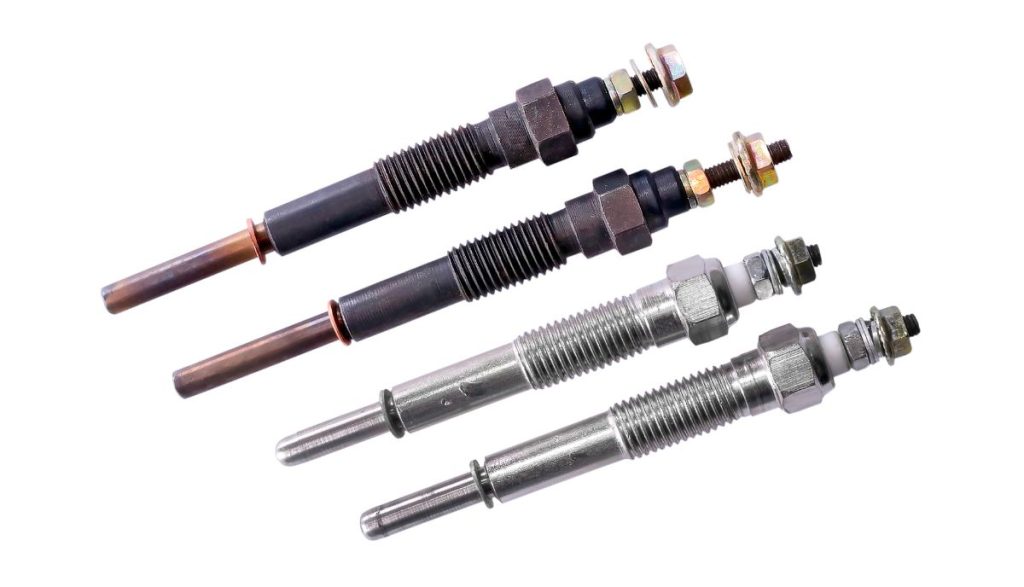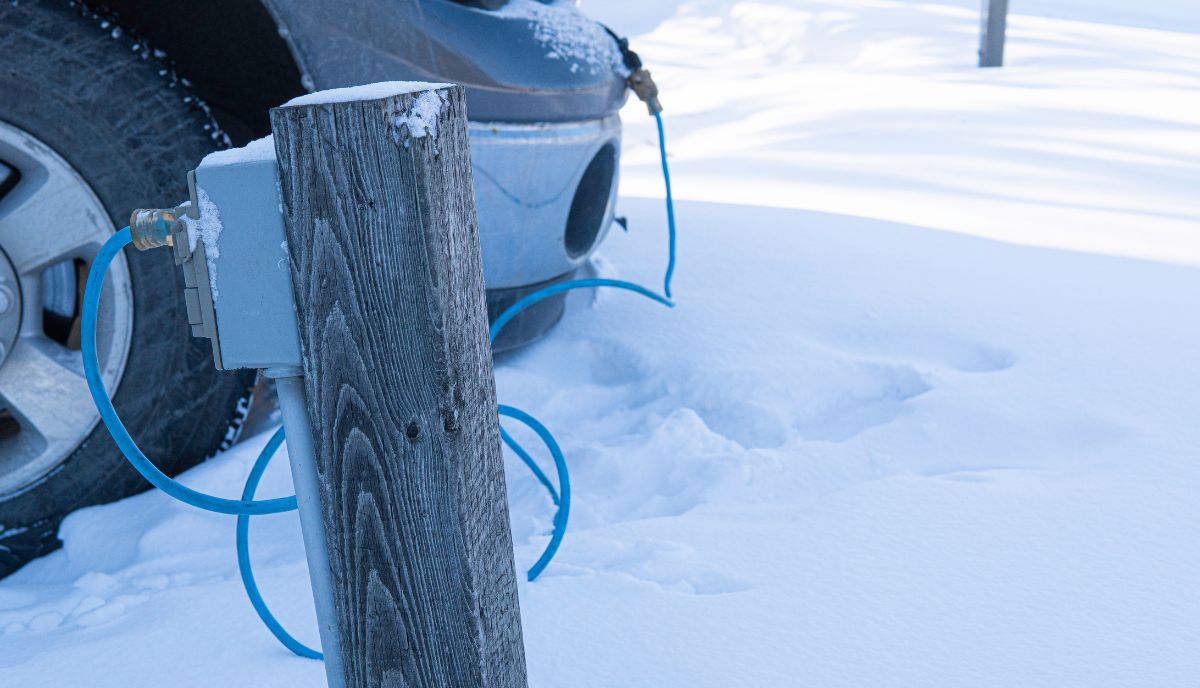All cars do not have block heaters. Block heaters allow vehicles to start in cold weather. But what if your area’s climate is perpetually warm? What purpose would it serve to install a block heater? Admittedly, manufacturers sell cars to consumers in all corners of the globe.
They need to know that every vehicle they deliver will start regardless of the ambient temperature. But places like Russia and Canada have freezing conditions during certain months of the year.
So yes, many modern vehicles have engine block heaters. But what about those without one? They have additional hardware that keeps the engine warm on cold days. They also use synthetic oil with attributes that allow the substance to maintain its viscosity when temperatures plummet.
Along with advanced fuel injection systems, modern vehicles are less likely to malfunction when you start them on a freezing morning. For many brands, the block heater is optional. You can ask them to install it beforehand or to ship the vehicle to you without it.
If you bought the car from a dealership and this component wasn’t mentioned, how can you tell whether the vehicle has a block heater?
- Check the manual or buyer’s guide. It will mention the heater. You can ask them to remove it to lower the car’s price tag.
- According to Davis GMC, block heater cords are wrapped with brightly colored tape. Look for the cable on the left or right side of the engine bay.
- Look for the block heater plug under the grill or near the headlights.
| VEHICLE BRAND | DOES IT HAVE A BLOCK HEATER? |
| AUDI | NO |
| BMW | NO |
| KIA SOUL | NO (But the dealership can install it) |
| TOYOTA | YES |
| DURAMAX | YES |
| VOLKSWAGEN | YES |
| SUBARU | YES |
| F150 | YES |
| F250 | YES |
Why Do Some Cars Have Block Heaters?
Block Heater Availability By Region

Despite what some people think, block heaters are not a luxury for the rich. This Clifford Power Information Sheet associates them with the following benefits:
- They reduce engine wear and tear (by 50 percent) because they allow the oil to maintain its viscosity, keeping the engine’s parts adequately lubricated.
- You save fuel because you don’t have to idle the car for several minutes to warm the engine.
- Block heaters reduce the strain on components such as the battery that typically struggle in low temperatures.
- They reduce fuel condensation on the cylinder walls.
- They extend the starter’s lifespan by reducing the load it must carry.
This Tech Navio study found that the Americas are the leading contributor to the engine block heater market. That contribution will continue to grow as temperatures in certain states fall. The study has also blamed anti-idling laws and the growing number of vehicles.
This is not a surprise. After all, from what EMR has seen, the biggest engine block heater companies in the world are American. That includes Hot Start Inc in Washington, Phillips and Temro Industries in Minnesota, and Five Star Manufacturing Group in Tennessee.
You also have NFR BV in the Netherlands and Mahle GmbH in Germany. You expect the coldest countries to embrace this technology at a faster rate because they have more to lose than customers in warmer regions.
The type of heater matters. Engine block heaters are not all the same. Some are cheaper and less effective than others:
- Dipstick
These resemble conventional dipsticks. However, they include a heating element that sits in the motor oil and raises the temperature. While dipstick heaters are easy to use, they boast a lower heating capacity than other options. On the positive side, they are affordable.
- Blankets
You place engine-warming blankets on the engine. You can also attach them to the bonnet’s side. They will keep the engine unit warm on a freezing night. Some people buy battery blankets. They wrap around the battery, providing insulation overnight.
- Oil Pan Heaters
You bolt (or attach with magnets) this heater to the oil pan. The goal is to raise the oil temperature by heating the pan. This allows the oil to maintain its viscosity.
- Coolant Heaters
Oil is not the only substance cold weather threatens. You can connect an in-line coolant device to the hose to warm the coolant. The circulating type will push the coolant through the system. The non-circulating device will stop at heating the coolant.
- Bolt-On Heater
As the name suggests, you bolt this heater onto the engine block. This indirectly heats the coolant through the engine. You need an expert to install this device. The wiring will confuse a layperson.
- Freeze Plug Heater
Remove the frost plug and replace it with a frost plug heater to warm the coolant inside the block. This is another challenging heating option. Laypeople should stick to heaters that don’t require tools or significant expertise to install.
For instance, any competent individual can use blanket and dipstick heaters. But you can’t mess with the in-line coolant heater unless you know your way around an engine.
According to this EMR study, dipstick heaters have the biggest market share, followed by warming blankets, oil pan heaters, bolt-on block heaters, freeze plugs, and in-line coolant heaters.
Cold Climate Considerations

Block heaters are necessary because low temperatures are dangerous to cars. Vehicles can start at temperatures as low as -15 degrees C. Technically, gasoline models can start in -40 C weather.
But according to the Globe and Mail, many block heaters will kick in once temperatures fall below -15 C. Low temperatures are risky for reasons such as the following:
- The oil will become too thick to flow.
- Oil that doesn’t flow cannot lubricate the engine’s parts. They will wear out faster because of the increased friction.
- The engine’s health will deteriorate because of the friction.
- The metallic parts will expand and contract because of fluctuating temperatures. This increases the rate of wear and tear.
- You will burn more fuel.
- The vehicle’s toxic emissions will increase.
- Multiple cold starts can damage the battery.
Some manufacturers add block heaters to the cars they sell in regions with freezing temperatures. Others encourage their dealerships to promote and offer block heater installments when winter comes. This is what you should know about the tool’s functionality in cold regions:
- Block heaters let your car start on a cold day by warming the engine.
- You can turn the hot air in the cabin on immediately without waiting for the engine to warm up. This allows you to activate defogging functions.
- You don’t have to run a block heater all night. Turn it on the moment you wake up. It can warm the engine in two hours or less.
- But you won’t cause harm by leaving the block heater on all night. Keep in mind that they use 50 to 1500 watts, depending on the type, size, and brand. Leaving the device on all night is wasteful.
- You don’t need a block heater if temperatures only plummet every once in a while. In such cases, remote starters are sufficient. Block heaters only matter if freezing temperatures are common and long-lasting.
- You can also ignore block heaters if you use synthetic oil or leave your vehicle in a heated parking lot sheltered from the cold.
Vehicle Type And Block Heater Installation
You can start a gasoline engine at 40 degrees below because of the innovative synthetic engine oil technology in modern cars. In fact, a gasoline car can survive winter conditions without a block heater if it has high-quality fuel and a strong battery.
This is why some drivers take their cars to repair shops for maintenance before the winter months roll around. A well-maintained gasoline car can comfortably withstand low temperatures. You can’t say the same for diesel engines.

Instead of spark plugs, they use glow plugs. This is problematic because they are less likely to start in cold weather due to inadequate heat. They need the additional warmth from a block heater to start.
As a result, manufacturers are more likely to add block heaters to diesel engines. Older vehicles are in a similar boat. Models that use 5W-30 or 10W-30 oil will struggle to start in cold temperatures. They don’t have inbuilt block heaters because the devices were a rarity when they rolled off the assembly line. But you can install the heater at any time.
A vehicle’s age cannot prevent you from adding a heater. Although the heater is merely one strategy among many that people use to protect their engines from cold weather. Prioritize synthetic oil. Don’t neglect the battery.

